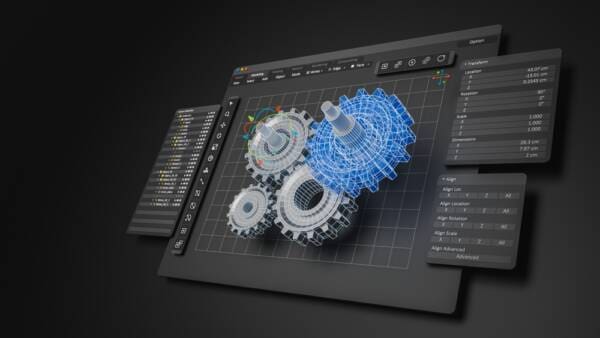In product design, having the right tools is a necessity. Creo 11, the latest iteration of PTC’s powerful computer-aided design (CAD) software, is built to meet the evolving needs of designers and engineers. This version isn’t just an upgrade — it’s a comprehensive enhancement that addresses the real-world challenges faced by professionals in the field. From an overhauled user interface to advanced modeling capabilities, Creo 11 offers substantial improvements that can boost your workflow and product quality.
User interface and user experience: Streamlined for efficiency
One of the most significant changes in Creo 11 is its user interface (UI), which is more intuitive and customizable. The UI allows users to tailor their workspace according to their specific needs. For example, you can organize tools and commands based on your workflow, reducing the time spent searching for the right tool. This type of customization is especially valuable in complex design tasks where efficiency is paramount.
Creo 11’s UI improvements also enhance the user experience (UX) to support better decision-making and reduce cognitive load. The new interface offers more visual cues and context-aware prompts, which help prevent errors before they occur. The intuitive interface lets you focus more on the design than the tool, leading to a smoother workflow and faster project completion.
Core modeling: Enhanced precision and flexibility
Creo 11 brings advancements to core modeling capabilities, addressing the need for precision and flexibility in design. These enhancements allow for creating more complex geometries and improving integration with other systems, making it easier to create accurate models that meet stringent engineering requirements.
One of the key improvements is the introduction of advanced control over feature definitions. Now, you can manipulate features at a granular level for more detailed and precise modeling. For instance, the ability to control feature parameters such as draft angles and fillet radii with greater accuracy means that designs can be optimized for performance and manufacturability from the outset.
Creo 11 also enhances its parametric modeling capabilities by improving the way parameters interact with each other. This functionality ensures more predictable and reliable outcomes when making adjustments to a model. In practice, this results in fewer surprises when altering dimensions or tweaking features, which is vital for maintaining design integrity across multiple iterations. For engineers, it translates to more confidence in their designs and less time spent on rework.
Multibody design: Simplifying complex assemblies
The introduction of multibody design in Creo 11 represents a leap forward in how designers can manage complex assemblies. Traditionally, working with multiple bodies within a single part file was cumbersome, often requiring workarounds that could lead to errors or inefficiencies. Creo 11 eliminates these challenges by enabling true multibody design capabilities.
With multibody design, you can create and manipulate multiple bodies within a single part environment. This feature is particularly useful when dealing with complex assemblies where different components must be designed and analyzed in relation to each other. For example, in the design of a complex mechanical assembly, you can model each component as a separate body within the same part file. This simplifies the design process and improves accuracy by letting you see how changes to one body affect the others in real time.
Creo 11’s multibody design also supports better data management and collaboration. Since all bodies are contained within a single file, there’s less risk of data loss or miscommunication between team members, which is beneficial in collaborative environments where multiple designers may work on different aspects of the same project. By streamlining the process, Creo 11 helps reduce the potential for errors and increases overall project efficiency.
Sheet metal design: Advanced capabilities for manufacturing
Creo 11 includes enhanced sheet metal design tools for greater control and flexibility. One of the standout features is the improved handling of bends and transitions. Creo 11 enables precise control over bend allowances and material behavior during forming processes. This is essential because accurate modeling of these aspects ensures the final manufactured part meets the intended design specifications.
Additionally, Creo 11 has expanded its capabilities in creating complex sheet metal forms. The new tools allow for more intricate designs, such as louvers and dimple features, which are often required in high-performance applications. These enhancements not only increase the aesthetic appeal of the final product but also contribute to its functionality, such as improving airflow or reducing weight.
Elevating the design process
Whether you’re dealing with complex assemblies, managing intricate sheet metal parts, or looking to improve your overall design process, Creo 11 offers the features and enhancements needed to achieve your goals. The real value of Creo 11 lies in its ability to streamline workflows and increase the accuracy and quality of your designs. In a field where precision is paramount, these improvements can make a difference in your ability to deliver high-quality products on time and within budget.
Are you ready to experience the power of Creo 11? Request a demo or contact one of our experts at TriStar.com to discover how these new features can transform your design process.






Leave A Comment